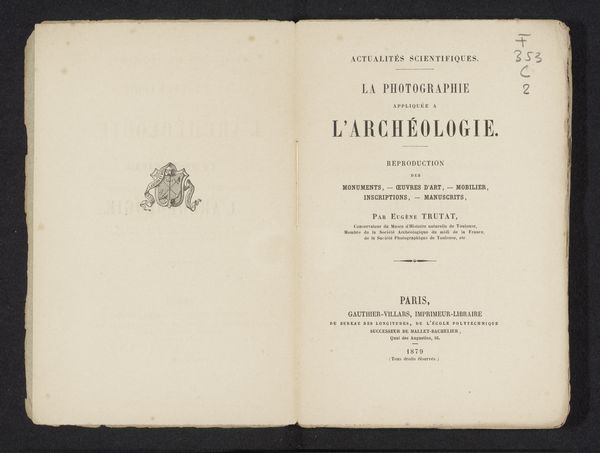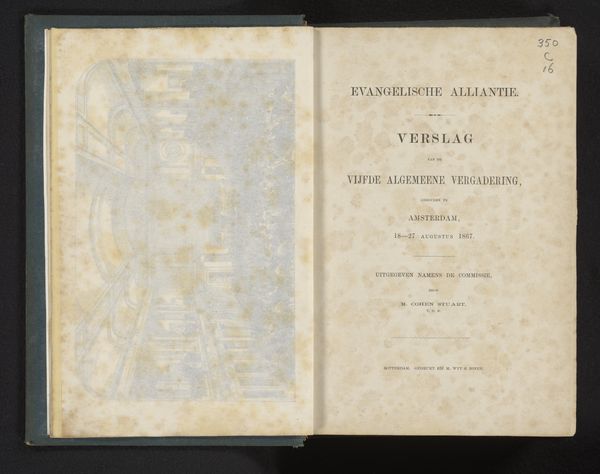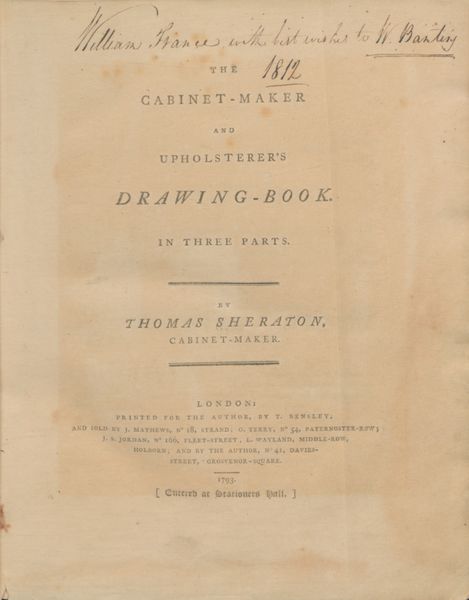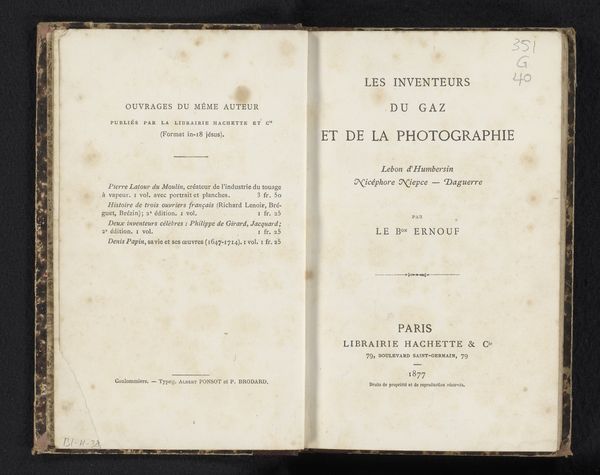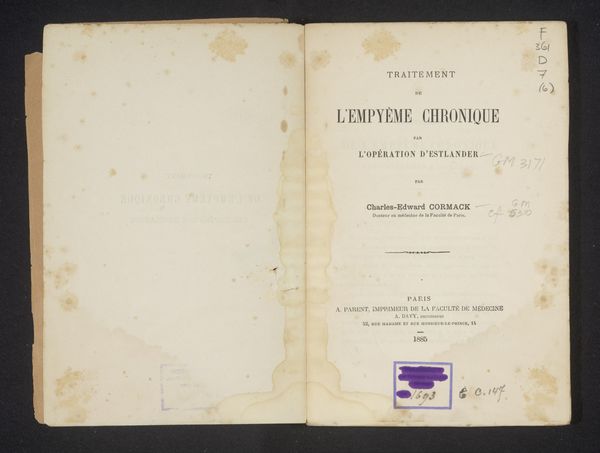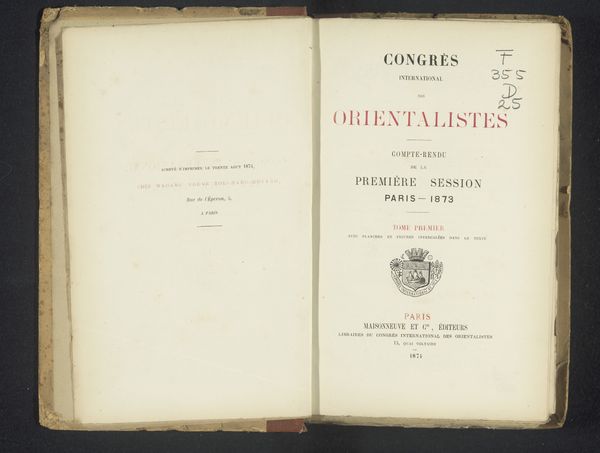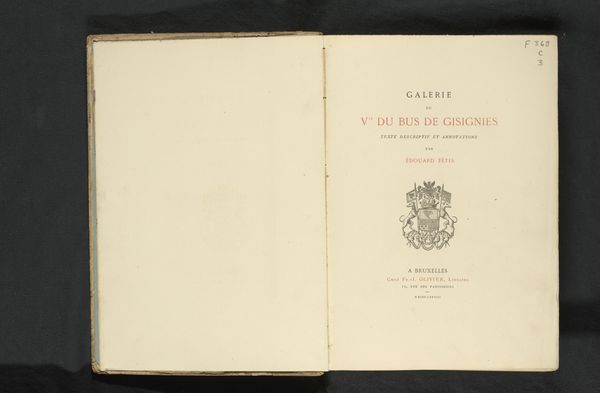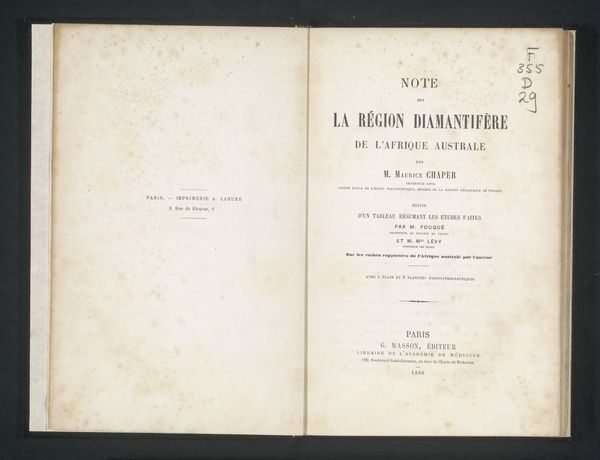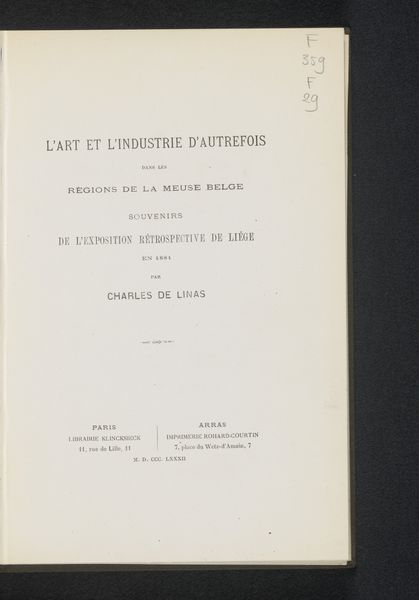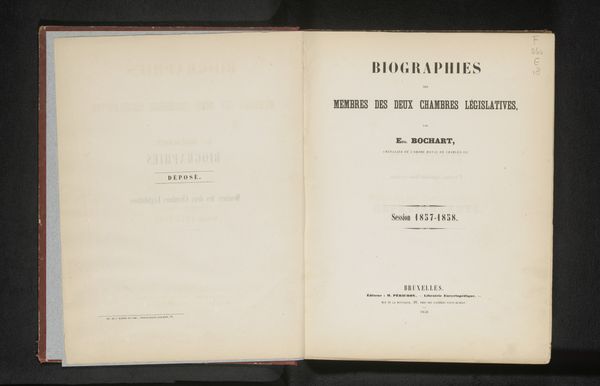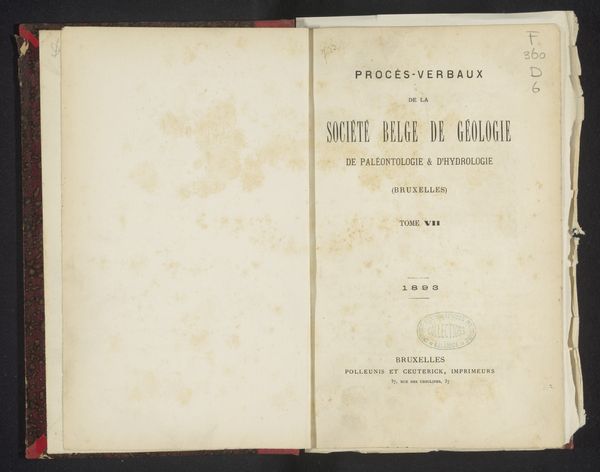
Études sur les caractères craniologiques d'une série d'assassins exécutés en Belgique 1881
0:00
0:00
print, paper
# print
#
paper
#
history-painting
Dimensions: height 240 mm, width 158 mm, thickness 5 mm
Copyright: Rijks Museum: Open Domain
Editor: We’re looking at Études sur les caractéres craniologiques d'une série d'assassins exécutés en Belgique, a print on paper from 1881, by M.P. Heger. The title itself is chilling - "Studies on the Craniological Characteristics of a Series of Assassins Executed in Belgium". I’m curious, what does a historian of art make of this title page, especially given its unsettling subject matter? Curator: The historical context is key here. This image is tied to the rise of criminology as a science. Consider the 19th century fascination with physiognomy and the belief that one could determine character from facial features and skull shape. This publication contributes to the history of scientific racism. Editor: Scientific racism? I hadn't considered that aspect. Curator: Exactly. These so-called "studies" often served to reinforce existing social prejudices by suggesting inherent biological differences between groups. How do you think this publication would have been received and used at the time? Editor: It's disturbing to think that it may have been seen as legitimate science, maybe even influencing legal and social policies. This work likely had very public consequences in terms of legitimizing discrimination, I can imagine the kind of “evidence” they hoped to advance by looking at these cranial measurements. I assumed “history-painting” tag meant just old! Thanks, that was super informative. Curator: My pleasure. Remembering art functions within – and impacts – social structures and power dynamics really can bring the artwork and period to life.
Comments
No comments
Be the first to comment and join the conversation on the ultimate creative platform.
